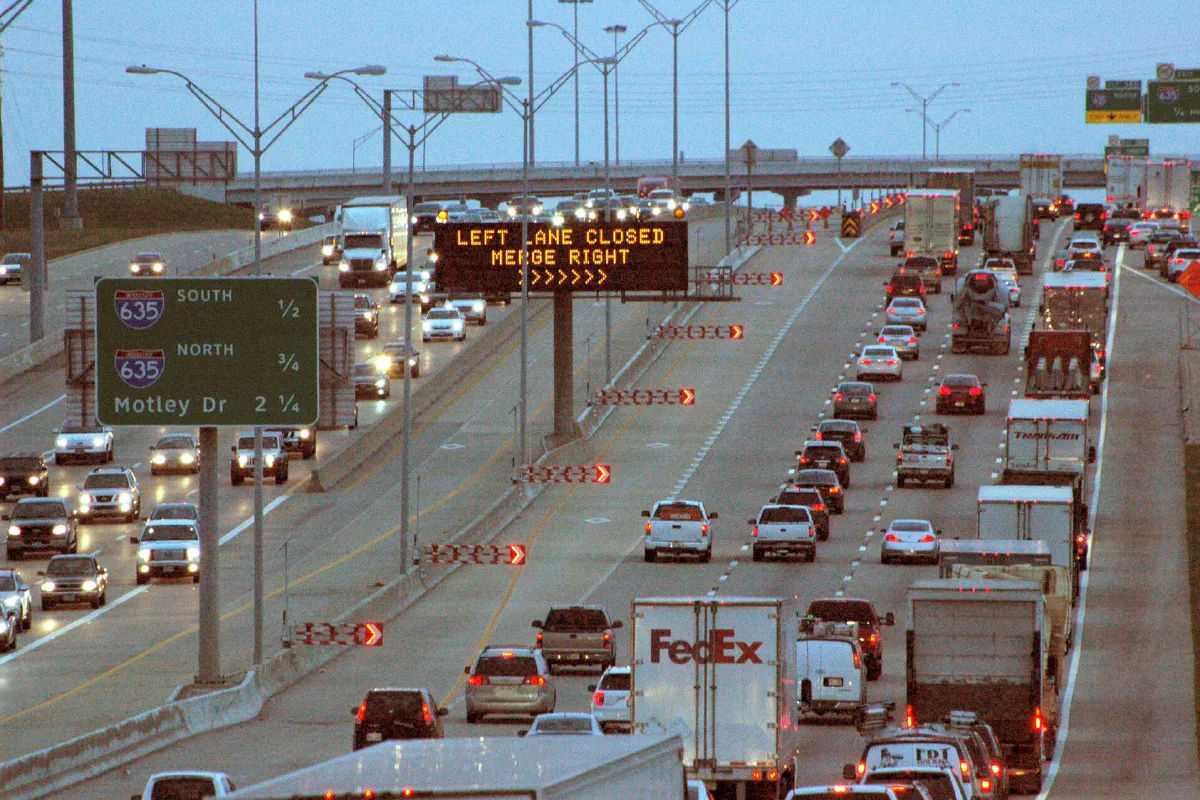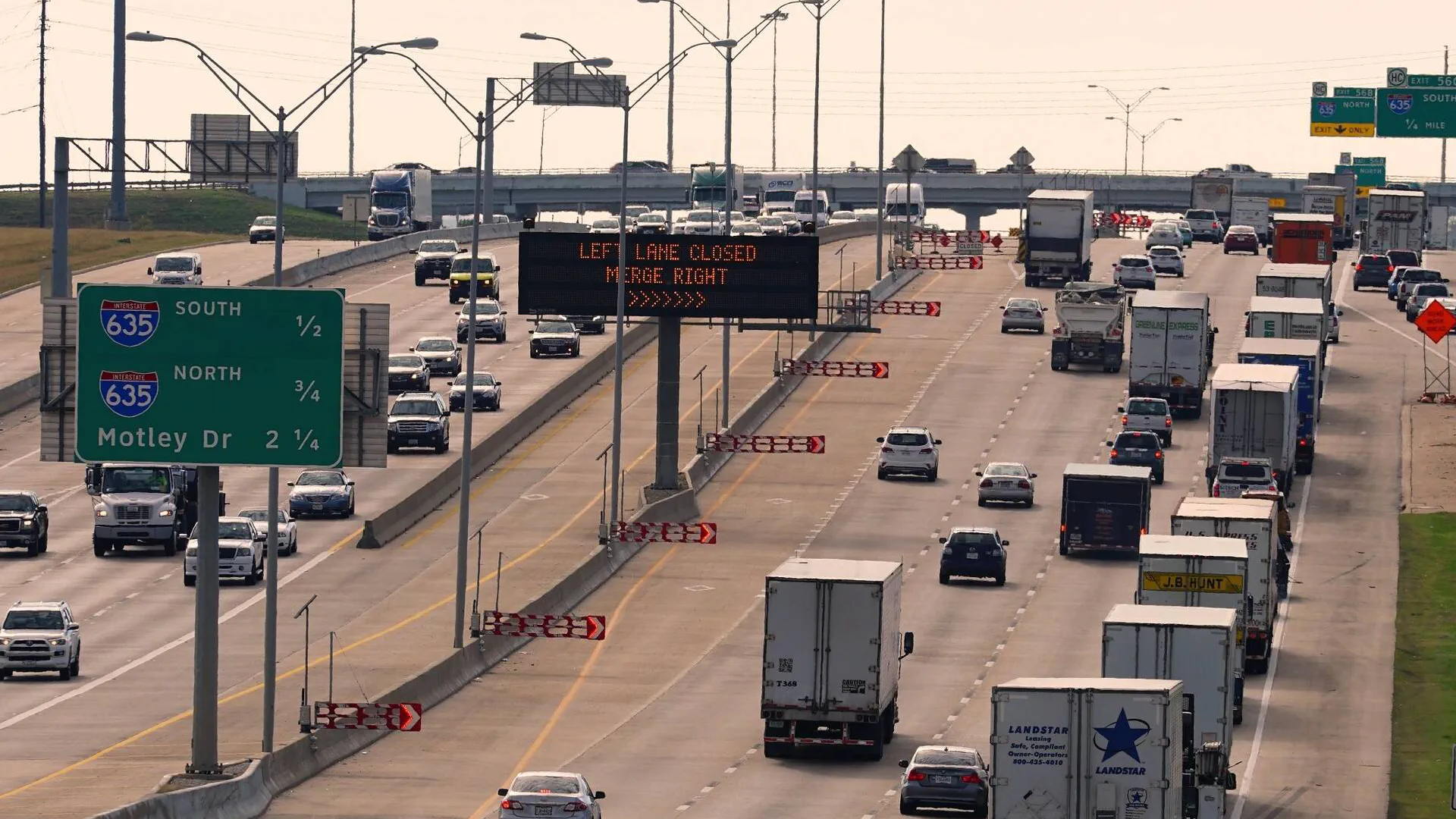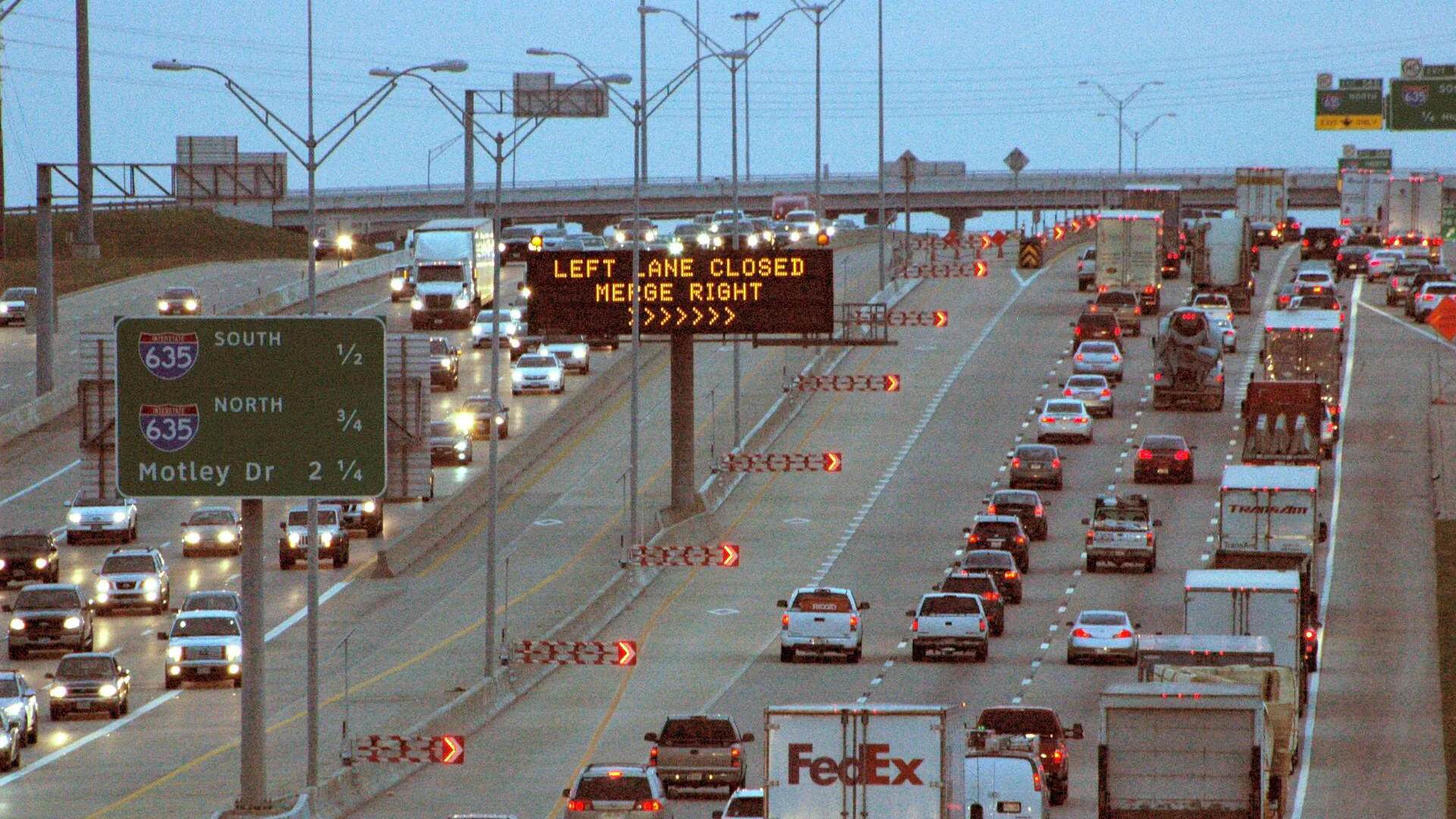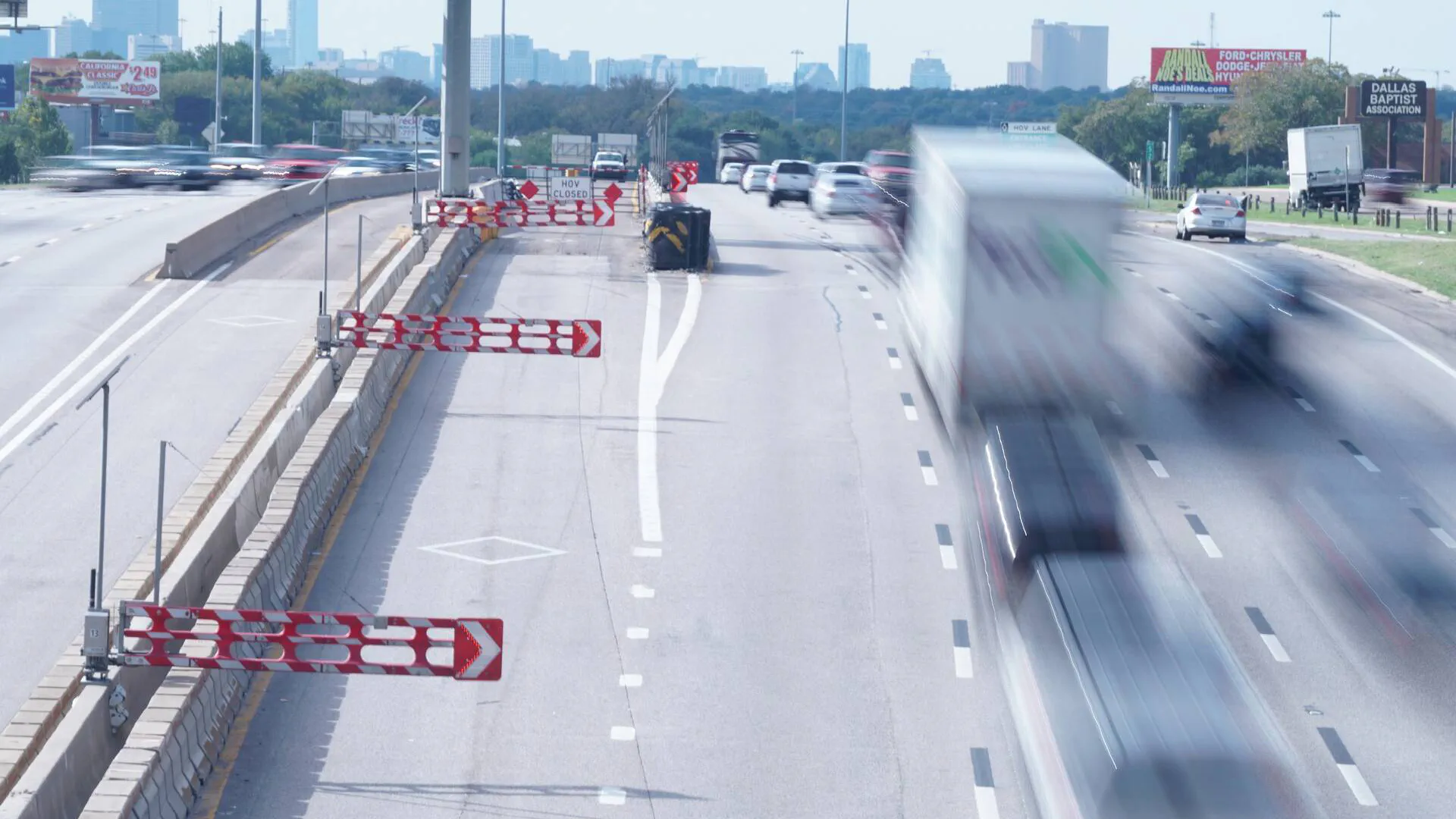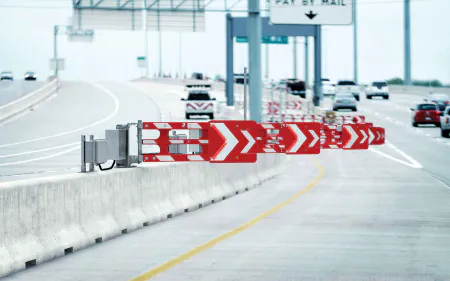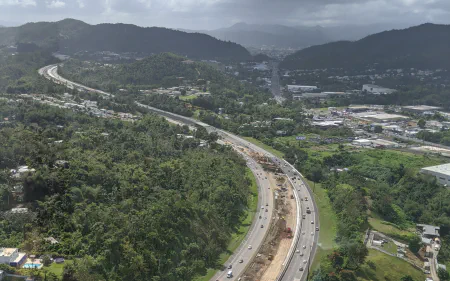Overview
The East R.L. Thornton Freeway, or the I-30, is a major radial freeway with six lanes primarily serving commuters driving towards Dallas’ central business district. To alleviate congestion during peak hours, an 11-mile Reversible HOV lane operation was introduced in 1991, facilitating the smooth flow of traffic in alternating directions. In 2015, the movable barrier operating contractor, with the support of the Dallas Area Rapid Transit, approached Versilis to implement an automated lane closure solution. The aim was to enhance the safety and efficiency of the daily traffic control required to deploy the contraflow lane.
Project Scope
As part of this project, the Versilis team collaborated with the operating contractor to determine the optimal gate layout required to automate five different access points. Thanks to its small footprint, the automated warning gate from Versilis was a simple retrofit that could be easily installed directly on top of the existing median barrier wall. The system’s wireless communication and solar power option were also vital components that contributed to the project’s success, reducing costs associated with communication and power wiring. Since 2015, a total of 47 horizonal warning gates have been deployed and retracted on a daily basis, significantly enhancing the safety and efficiency of the critical movable barrier operation.

